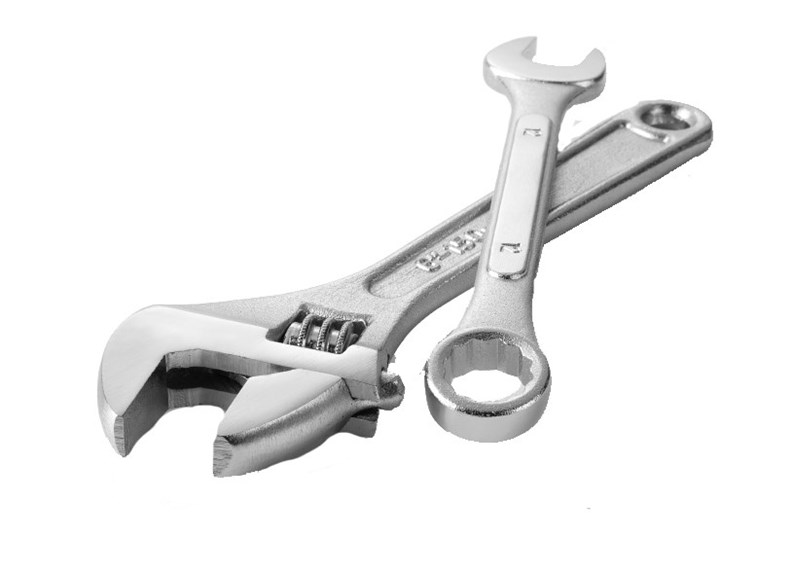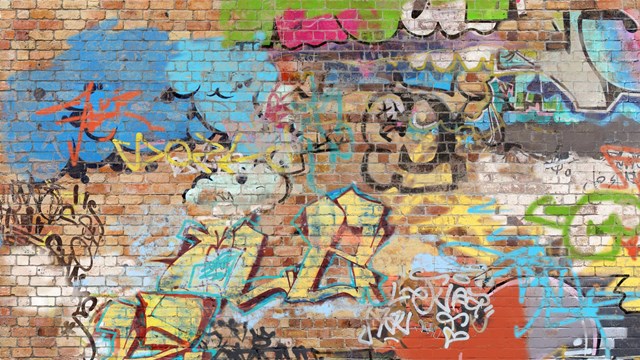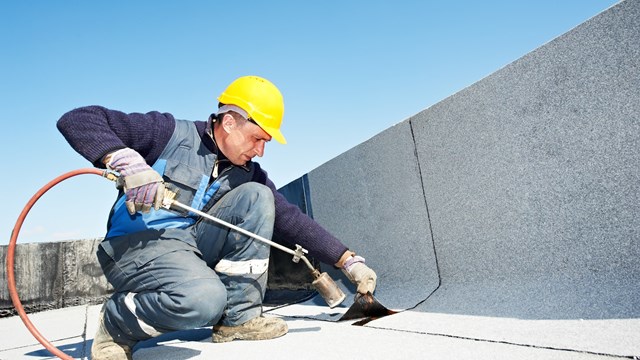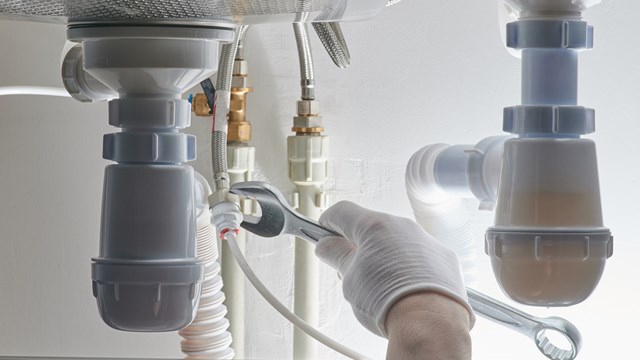Water leaks are the bane of many an apartment owner—and many a building superintendent. The innocent drip-drip-drip sound can augur waterfall-like hardship if not properly addressed. Leaks can cause major structural damage, ruin property, and set the stage for a potentially worse problem: mold growth.
Furthermore, leaks are not exactly rare—American Leak Detection, a nationwide company, claims to have discovered 1.4 million leaks last year alone. So how do you spot leaks? How do you stop them? How can you prevent the spread of mold and keep your home safe? Let’s take a look.
Common Causes
“Ninety percent of all damage to a home is caused by water—either in liquid or vapor form,” says Stuart Somerville, the owner and chief inspector for National Property Inspections, in Neptune, New Jersey.
The most common source of leaks is faulty plumbing. Sometimes a water main bursts in the basement, which, while a major headache, at least has the advantage of being easily detected and therefore repaired quickly and easily.
Unfortunately, most plumbing leaks are more subtle. The only way to notice them is by the damage they cause—water-stained ceiling tiles, wet patches on sheetrock, soft spots at the base of the toilet, and so forth. By then, of course, what might have started as a minor leak has already morphed into a big problem.
Another common cause of leaks is water infiltration through the basement. Again, the seepage is generally subtle, so much so that, if the basement is not used as living space, owners tend to ignore the problem and let the water fester, Somerville says.
“People just don’t want to pay a plumber or do the work themselves— even though in many cases they can,” he says.
Other causes include leaky roofs—although not as many as you’d think, Somerville says—and, in buildings that have them, radiant heating systems.
Detection
The more quickly a leak is found, the more quickly a leak is plugged. Speed, then, is critical. The problem is, leaks can be difficult—and occasionally impossible—to find.
“It depends on what the water is leaking into,” says Lawrence Ubell, chief inspector for Accurate Building Inspectors in Brooklyn, who does home inspections in the tri-state area.
“If it’s a ceiling tile, you know right away. In drywall, [the moisture] has to find the seam and then come through, which takes longer,” he says. “With plaster, there’s nowhere for the water to go, so over time the material gets loaded with water weight, and the plaster fails.”
Some leaks are never detected.
“The drips might evaporate before they leak through,” Ubell notes. “Or it might only leak when a fixture is in use.”
For example, your shower might leak, but only when it’s running. By the time you use the shower, leave for work, and come home, the water has already evaporated—especially if the building is warm.
Furthermore, leaks are not usually noticeable in the water bill (especially if you live in a condo or co-op where water is folded into the maintenance fee). “It’s not like the bill will double,” Somerville says. “It’s a slow, steady thing.”
What do you do if you know there’s a leak, but you can’t find it? You call a leak detection specialist—a Sherlock Holmes of the water seepage set. With an array of James Bond-like gizmos, your chosen professional will find the root of your problem.
Bud Neglio is the owner of the Freehold, New Jersey franchise of American Leak Detection, and its chief technician. “We specialize in hard to find stuff,” he says. “Anywhere from city water mains to above-ground swimming pools.”
One of the tools of the trade is a computer-generated listening device, complete with hi-tech microphone. Armed with the stethoscope-like instrument, Neglio listens for vibrations, which indicate the source of the leak.
Another trick is to pump hydrogen into the water line. Based on the gas’s reaction to the water therein, Neglio uses a hydrogen-locating device to pinpoint the problem area. This also works with nitrogen, as well as magnetic fields.
Infrared locators work well with radiant heat systems. Heat tends to escape in the leaked area, so the temperature there is slightly lower.
“It’s accurate to one-tenth of a degree,” Neglio says. “It will pick up footprints where you just walked. Firemen use it to find hot spots in burning buildings.”
Ubell, who moonlights as a home repair talk radio host on WNYC, employs a moisture meter to find leak sources.
“There are two metal prongs that you push into the sheetrock, and it tells me how wet or dry the wall is,” he says.
There are many variables, so the readout isn’t an absolute. For example, in the summer, when the humidity is higher, readings skew wet. But the moisture meter will give you a good idea of where a potential leak might be.
“Water will always leave some sign,” Somerville says.
Mold
The presence of a leak—even a bad one—doesn’t necessarily herald mold growth, both Somerville and Ubell stress.
“There’s no such thing as a mold problem,” Ubell says, “only a moisture problem.”
Indeed, mold will not grow—let alone thrive—unless four conditions are met.
First, there needs to be what Ubell calls “mold food—anything organic: latex paint, wood, paper in sheetrock, leather.” Thus, plaster walls tend to not get moldy, because plaster is inorganic. Pressure-treated wood, too, is mold-resistant.
Second, for mold to grow, the area must be sufficiently warm. There are fewer mold problems in the winter than the summer.
Third, mold spores need to be present. This can be relative to the amount of bacteria in the water. Leakage from radiant heaters, for example, tends to be cleaner, because the water inside is so hot. Roof leakage has some bacteria from the atmosphere, because the water is still.
Then there’s those bathroom leaks.
“Toilet water is loaded with bacteria,” Ubell says, “and thus can cause more mold and fungus.”
Finally, and most importantly, the area must be moist for mold to grow. Whether in liquid or vapor form, water needs to be continuously present. Mold thrives in damp areas, where moisture doesn’t evaporate—hence the relationship of mold to leakage.
“No matter how much bleach you throw at it, if the leak isn’t fixed, the mold will come back,” Ubell says.
The best way to combat mold is through ventilation. Proper air supply ensures that excess water will evaporate.
“If you have constant air flow,” Somerville says, “you won’t get mold or mildew. Even if the leak isn’t properly fixed, with proper ventilation, mold can be avoided.”
The reason basements tend to be susceptible to mold is because basements are usually poorly ventilated. An inexpensive way to minimize the risk of mold is to run a dehumidifier in musty basements.
Central air conditioning systems, in addition to cooling the hot air, also eliminate excess moisture, and are key to mold prevention. It’s important to leave them on, however, even if you’re not home.
“One of my clients, their house was vacant while they were trying to sell it, so they turned off the central air during the summer, to save money,” Somerville says. “They wound up with a mold problem in their basement.”
If you only do one thing to prevent mold infiltration, the experts advise ventilating as much as possible.
“You can never have too much air flow in attics, crawl spaces, or basements,” Somerville says.
Leaky Pipes = Leaky Wallet
Given enough time, flowing water will erode mountains. Your building is not as old as the Delaware River, of course, but the potency of H2O is the same. A little drip can do a great deal of damage.
If the leak is detected and repaired quickly, damage might be confined to a new trap under the kitchen sink, or a new wax ring (so called because they used to be made of beeswax) under the toilet. Sometimes sheetrock walls have to be replaced and repainted.
Left to fester, however, the costs can be devastating.
“You’re looking at structural damage—replacing wood, floor joists, girders,” Somerville says. “You have to call in a contractor for replacement work, and that takes a long time.”
And is quite expensive. A partial building inspection, to look for a specific leak, costs as little as $100 per hour. A visit from Neglio’s American Leak Detection runs $175 per hour, with a two-hour minimum.
Either way, it’s a good idea to call a building inspector or a leak specialist rather than a plumber or an electrician, unless you have already isolated the source of the leak.
“I charge basically a consultation fee,” Ubell says. “I don’t actually fix the leak, because that would be a conflict of interest. If there’s a hole in your roof that’s causing a leak, a plumber might say it’s the plumbing that’s the problem; an electrician may say it’s the electric, because they make money that way, I would say, maybe it’s because your roof is bad.”
Greg Olear is a freelance writer living in upstate New York and a frequent contributor to The Cooperator.







Comments
Leave a Comment